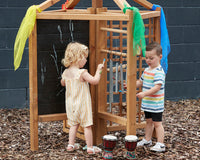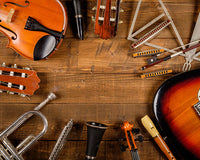Reed Sizes
Reeds vary in strength in half measures – a bit like shoe sizes! – so they start at 1 ½, 2, 2 ½ , 3, 3 ½, etc. The number refers to how thick the reed is. This is not a standardized scale, however, and reed thicknesses and construction vary by manufacturer - Rico reeds are generally thinner than Vandoren, for example. The thickness of the tip and heel and the profile in between affect the sound and playability. A thicker reed is more difficult to play but thicker reeds do offer a much better tone production and thus improve the sound of an instrument.
Beginners or young students almost always start on a 1 ½ or a 2 reed and progress through the thicknesses as they progress and become more advanced players.
What Brand?
We currently stock Montreux, Rico, Rico Royal and Vandoren reeds. Is there really much difference? Montreux are the cheapest and most popular with schools and young children. Their boxes of 10 reeds are great value for money. Rico Royal reeds often suit the more advanced beginner or intermediate player. Vandoren reeds are the most expensive but do offer the best tone production and quality, these are used by advanced and professional players.
There's no reason you can't mix and match what reeds you use. Some beginners find the quality of the Vandoren reeds make the instruments easier to play and learning becomes easier as a result. Others find that because of the number of reeds they go through, the Montreux reeds are best value for money.
Longevity - How long should my reed last? Like so many things with reeds, there's no exact science. If a reed is cared for, handled delicately and dried gently after playing it will last longer, but there's no definite timescale to measure it against. Some reeds will last for weeks, others will last a few days. It's all down to the organic nature of the cane! It's for this reason that some schools have started to use plastic reeds for their youngest beginners. While the tonal quality is far inferior to the cane examples, they are long lasting and can make a good start on an instrument much easier.
Ok, I understand all that - so which is best for me? Reeds, like mouthpieces on brass or strings on guitars, are very individual. It's best to try a couple and find a brand and strength you're comfortable with through trial and error. Helpfully, the reeds are all organised by the instrument and key they're designed for - so if you're playing an alto saxophone or an Eb clarinet, it will say so in the title. Likewise, if you’re not sure what number reed you have, that too is printed on the reed somewhere. For C clarinets there is no 'C' reed, so the the Eb reeds are the subsitute. Our full range of instrument reeds can be viewed here.




















